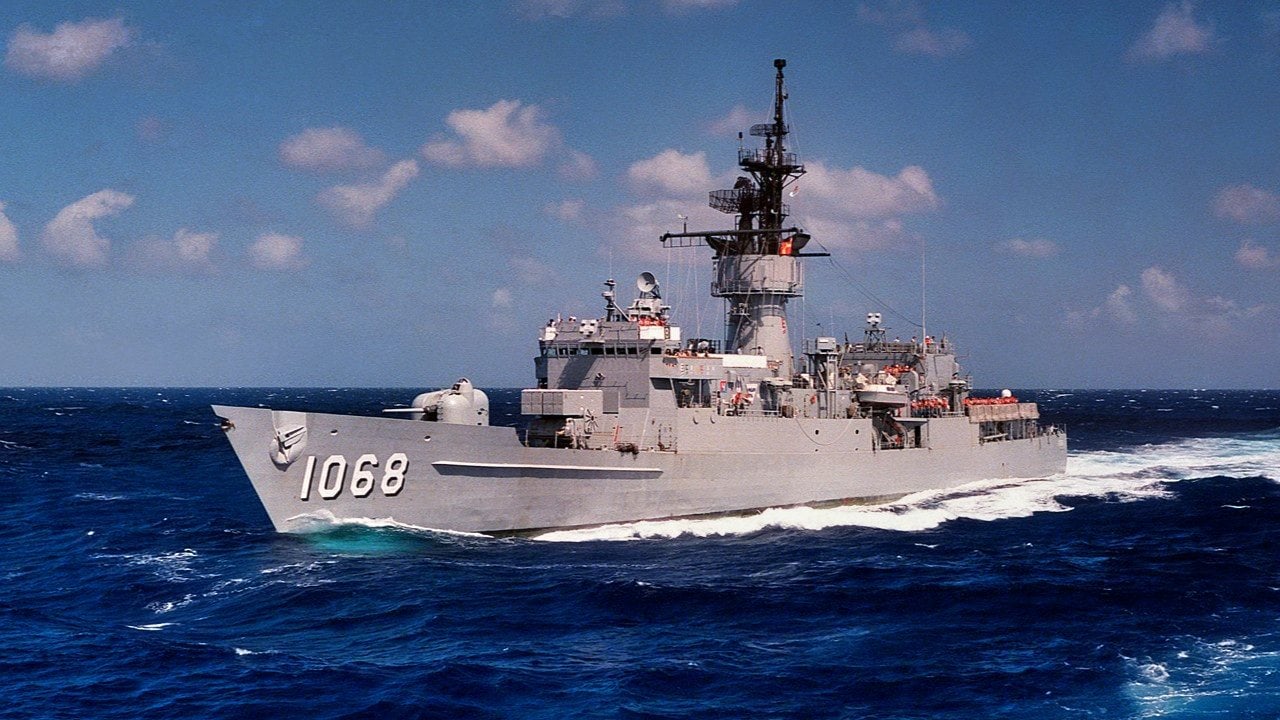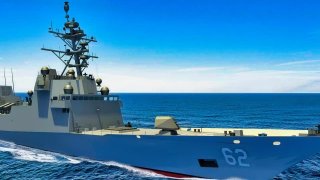The Navy's Constellation-Class Frigate Nightmare Has Arrived
The U.S. Navy's Constellation-class frigate program, intended to enhance interoperability with European allies, has faced significant setbacks due to inefficiencies and last-minute design changes. Built by Italian shipbuilder Fincantieri Marinette Marine, these frigates were supposed to integrate closely with European naval forces.
Summary and Key Points: The U.S. Navy's Constellation-class frigate program, intended to enhance interoperability with European allies, has faced significant setbacks due to inefficiencies and last-minute design changes. Built by Italian shipbuilder Fincantieri Marinette Marine, these frigates were supposed to integrate closely with European naval forces.
-However, the Navy's modifications have drastically reduced interoperability, raising costs by 40% and delaying the deployment timeline.
-Despite naming additional ships in the class, the Navy's ambitious plans are unlikely to materialize as envisioned. This situation reflects broader issues in the Navy's acquisition processes, which are increasingly out of step with contemporary defense needs.
Navy's Constellation-Class Frigate Program Faces Major Setbacks
The U.S. Navy is in a rut when it comes to designing and developing new platforms. Its inefficient acquisitions processes are more appropriate to the last century than to this one, and the U.S. is mired in a shipbuilding crisis. The Navy is in no way prepared to meet the challenges the United States faces today.
One of the Navy’s biggest recent failures concerns the new Constellation-class frigate.
Built for Interoperability
The Constellation program was meant to increase interoperability between the United States and the navies of its European allies. The Navy opted to go with Italian shipbuilder Fincantieri Marinette Marine, which has operations in Wisconsin.
Fincantieri is a major shipbuilder of the FREMM frigates that are integral to Italy’s maritime defense – indeed, to all of Europe’s.
In May, the Navy awarded Fincantieri Marinette Marine a contract for two additional frigates. This, even though the Constellation-class frigate has been plagued by controversy and inefficiency.
The Navy Names Its Next Frigate
Secretary of the Navy Carlos Del Toro said in June that the Navy was naming the proposed FFG-67 USS Galvez. The Navy chose to name the warship after Count Bernardo de Gálvez y Madrid for his service during the American Revolution.
The US Navy’s official website explains that this man “provided supplies, intelligence, and military support to the American colonists and led military victories for Spain against Great Britain. As governor of Spain’s territory in Louisiana, he covertly worked with American agent Oliver Pollock in 1777 to transfer money, gunpowder, and vital supplies to colonial forces.”
Galvez’s service to the fledgling American republic goes beyond that. In fact, Galveston Bay in Texas is named after him. In 2014, Congress granted Galvez honorary citizenship, making him one of only eight people to have been granted such an honor.
Along with FFG-67, the Navy intends to build USS Constellation (FFG-62), USS Congress (FFG-63), USS Chesapeake (FFG-64), USS Lafayette (FFG-65), and USS Hamilton (FFG-66).
The only problem for the Navy’s best-laid plans is reality.
The Navy’s Failure Factory
As I reported in these pages a few months ago, the Pentagon conveniently “underestimated the cost of [the Constellation-class frigate] by 40 percent.” What’s more, according to my reporting, the Navy imposed last-minute design changes that “reduced [interoperability] from 85 percent to just 15 percent.”

In other words, the Navy futzed with the design of the warship after it had agreed to Fincantieri’s building it, thereby negating the entire reasoning for choosing the Italian shipbuilder.
Headlines all year have shown how the Navy’s proposed timeline for the ships’ deployment will not happen. The complications caused by last-minute changes mean the ships of this class are unlikely to arrive in a timely and affordable manner.
Further, I’d wager that there’s no way the Navy gets the five ships it dreams of having because of the cost overruns, lack of interoperability, and whatever other complications will inevitably arise in the construction of these boats.
Nevertheless, the defense contractors of the Beltway can rest assured that the tax dollars will still be spent on them. In a saner, well-run country, this sort of fiasco would not be allowed.
In America, sadly, it’s just an accepted norm.
Author Experience and Expertise: Brandon J. Weichert
Brandon J. Weichert, a National Interest national security analyst, is a former Congressional staffer and geopolitical analyst who is a contributor at The Washington Times, the Asia Times, and The-Pipeline. He is the author of Winning Space: How America Remains a Superpower, Biohacked: China’s Race to Control Life, and The Shadow War: Iran’s Quest for Supremacy. His next book, A Disaster of Our Own Making: How the West Lost Ukraine, is due October 22 from Encounter Books. Weichert can be followed via Twitter @WeTheBrandon.
All images are Creative Commons or Shutterstock.
From the Vault
Russia Freaked Out: Why the U.S. Navy 'Unretired' the Iowa-Class Battleships
Battleship vs. Battlecruiser: Iowa-Class vs. Russia's Kirov-Class (Who Wins?)


